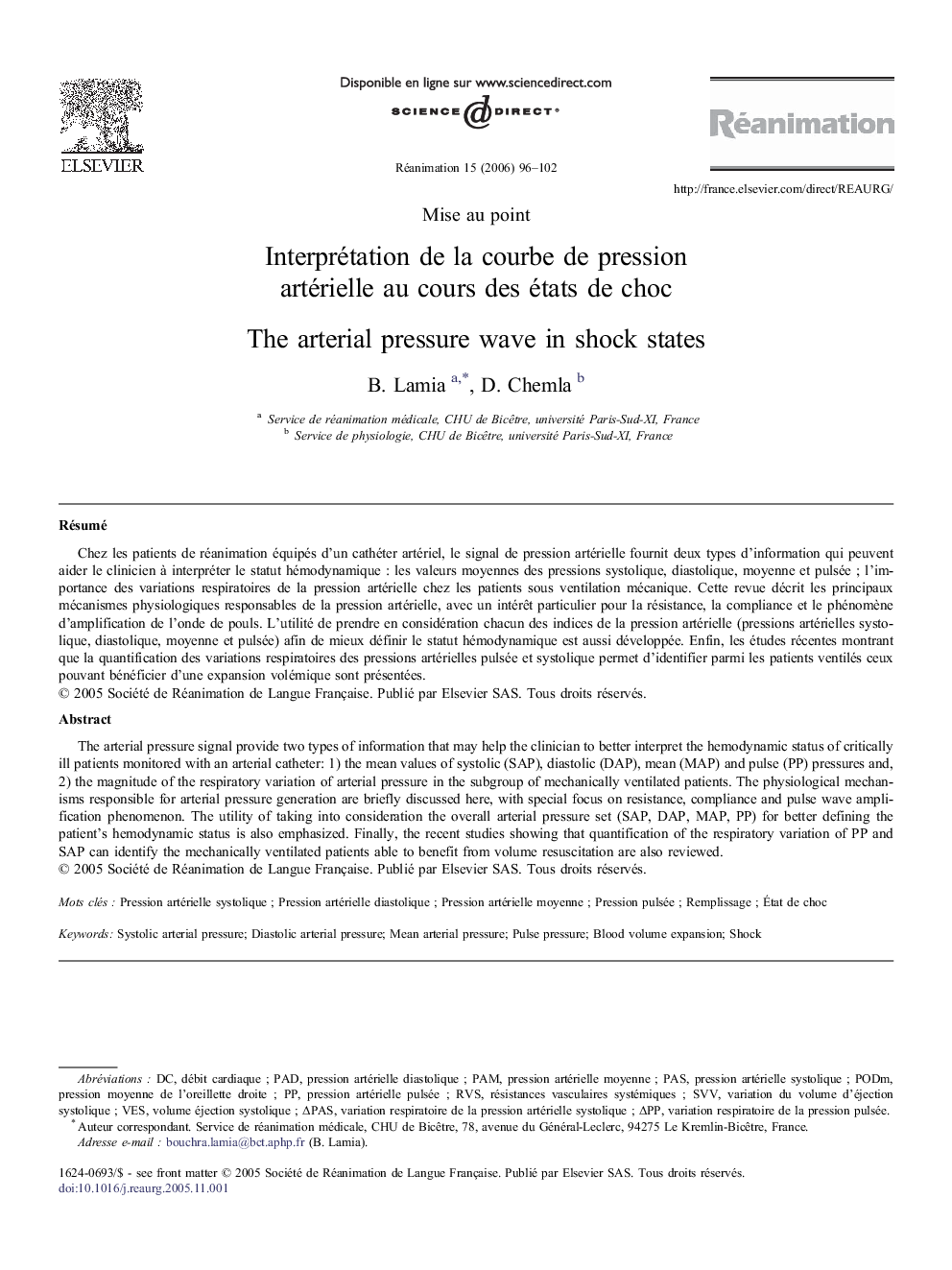| Article ID | Journal | Published Year | Pages | File Type |
|---|---|---|---|---|
| 2612400 | Réanimation | 2006 | 7 Pages |
Abstract
The arterial pressure signal provide two types of information that may help the clinician to better interpret the hemodynamic status of critically ill patients monitored with an arterial catheter: 1) the mean values of systolic (SAP), diastolic (DAP), mean (MAP) and pulse (PP) pressures and, 2) the magnitude of the respiratory variation of arterial pressure in the subgroup of mechanically ventilated patients. The physiological mechanisms responsible for arterial pressure generation are briefly discussed here, with special focus on resistance, compliance and pulse wave amplification phenomenon. The utility of taking into consideration the overall arterial pressure set (SAP, DAP, MAP, PP) for better defining the patient's hemodynamic status is also emphasized. Finally, the recent studies showing that quantification of the respiratory variation of PP and SAP can identify the mechanically ventilated patients able to benefit from volume resuscitation are also reviewed.
Keywords
Related Topics
Health Sciences
Medicine and Dentistry
Emergency Medicine
Authors
B. Lamia, D. Chemla,
